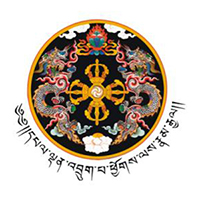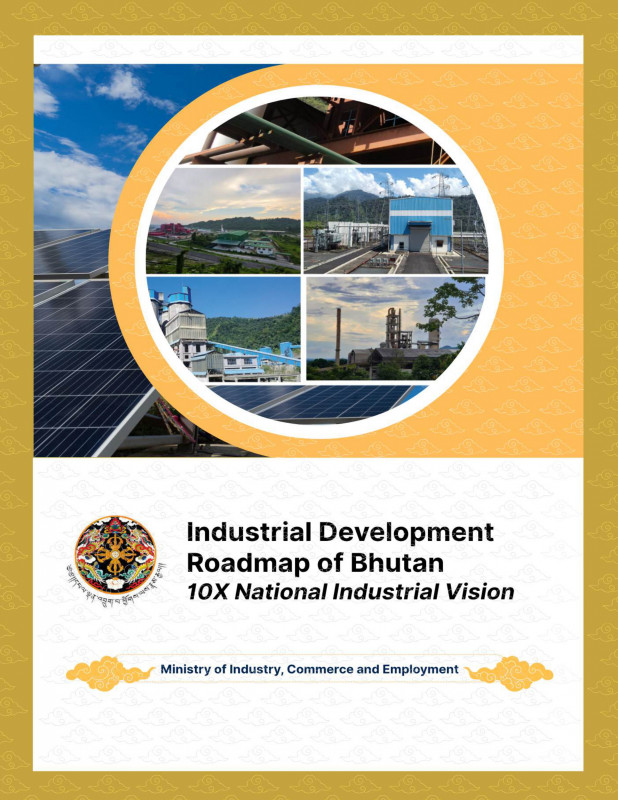


Thimphu, Bhutan – 8th August 2025
The Ministry of Industry, Commerce and Employment (MoICE) is proud to announce the official launch of the Industrial Development Roadmap (IDR) 2025, a national initiative that redefines Bhutan’s approach to industrialization, anchored in the principles of Gross National Happiness (GNH) and aligned with the 21st Century Economic Roadmap.
The IDR sets out a comprehensive, strategic, and future-ready framework to transform Bhutan’s industrial sector into a dynamic, inclusive, resilient, and globally competitive engine of economic prosperity. This document addresses the structural challenges confronting the sector and lays the foundation for green, innovation-driven, and regionally balanced industrial growth.
Currently, the industrial sector contributes approximately 53% to Bhutan’s GDP, yet it remains underdeveloped, with weak diversification, limited value addition, and high import dependency. The 2023 Industrial Census revealed that over 95% of Bhutanese industries are small-scale or cottage-based, and nearly 59% are non-operational, reflecting systemic challenges such as access to finance, market constraints, and regulatory burdens. Youth unemployment at 17.7% underscores the urgent need for job creation and skills alignment.
The IDR envisions an industrial sector that is green, inclusive, and innovation-led. By 2035, the roadmap aims to:
- Generate 65,000+ new industrial jobs, with 40% targeted at youth, women, and rural populations.
- Raise manufacturing’s GDP share from 8% to 12%.
- Increase the overall contribution of industry to 60% of GDP.
- Mobilize Nu. 300 billion in private and foreign investments.
- Double the value of industrial exports while reducing import dependency.
The roadmap identifies ten high-potential sectors based on Bhutan’s comparative advantages, sustainability imperatives, and global demand trends:
1. Agro Industries
2. Creative Industries
3. Data Center Services
4. Education Services
5. Forestry-Based Industries
6. ICT Industries
7. MedTech Wellness Industries
8. Mineral-Based Industries
9. Renewable Energy
10. Tourism
Each sector will have tailored interventions across policy, infrastructure, finance, skills, technology, and market access.
The IDR’s dual-track strategy involves:
- Strengthening the national industrial ecosystem through reforms in licensing, regulation, finance, and digital infrastructure.
- Sector-specific action plans that unlock growth, innovation, and investment potential while advancing Bhutan’s commitments to climate resilience and social equity.
Strategic interventions include:
- Establishing an Industrial Development Finance Facility to provide concessional loans and credit guarantees.
- Developing smart industrial parks and regional clusters.
- Promoting green manufacturing and circular economy models.
- Reforming State-Owned Enterprises to enable private sector dynamism.
- Digitizing approvals through an Integrated Business Licensing
- System and enabling cross-border digital payments.
- Expanding TVET systems to achieve 100% alignment with industry needs by 2032.
The IDR is the result of a rigorous, data-driven process, developed over four months by a dedicated 13-member task force under MoICE. The roadmap incorporates insights from 80+ stakeholders across government, private sector, academia, and civil society through 11 national consultation workshops.
Importantly, the IDR is positioned as a working document designed for flexibility, periodic review, and iterative adaptation based on evolving national priorities and global developments.
The Industrial Development Roadmap 2025 is available on the Department of Industry’s website under the publications section.
Download the full report: https://www.industry.gov.bt/publications
Department of Industry
MoICE